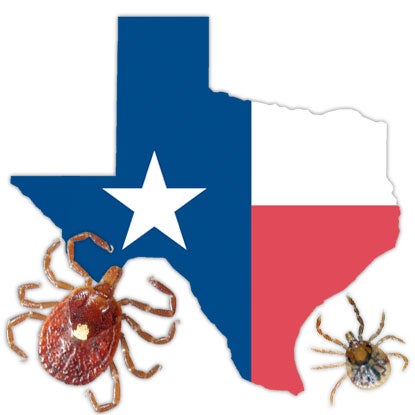January 04, 2011
Not everything is bigger in Texas. For example, take tick infection rates – that’s the proportion of ticks infected with disease-causing microbes. In tiny Rhode Island, tick infection rates for serious tick-transmitted diseases like Lyme disease, human babesiosis, and human anaplasmosis typically range from 10 – 75% (depending on tick stage and microbial agent) and are among the highest anywhere. In contrast, a recent study from Texas found that less than 2% of human biting ticks there contained known human pathogens.

The study’s authors screened 903 ticks taken from people living in 138 of 254 Texas counties and tested them for the presence of microbial DNA. While 144 of the 903 ticks did test positive, only about 15 of the ticks contained DNA of agents known to cause disease in humans. The rest were infected with microbes likely to be part of the normal tick flora or that have never been shown to infect humans. The most common human-biting tick in this study was the Lone Star tick (41%), followed by American dog tick (20%), Cayenne tick (Amblyomma cajennense)(19%), brown dog tick (10%), blacklegged tick (8%), and Gulf Coast tick (1%). It’s always a good idea to identify any tick found biting but in Texas, it seems, few of the ticks are packin’. [note: TickEncounter will be working to add the Cayenne tick to its south-central tick identification chart asap].
